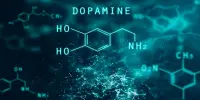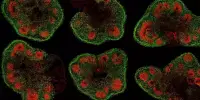The changing developmental needs of offspring, as well as a wide range of environmental factors, shape and challenge maternal behavior, with evidence indicating that the maternal brain is highly plastic. This plasticity can be seen in cellular and molecular systems, such as intra- and intercellular signaling processes and transcriptional profiles.
Various conditions, such as postpartum depression or postpartum psychosis, can alter maternal behavior and disrupt the mother-child bonding process. A research team led by Daniela Pollak from MedUni Vienna’s Center for Physiology and Pharmacology conducted a study in which they were able to identify the neuronal circuits in the brain that are activated during the learning of maternal behavior. The findings, published in The EMBO Journal, can be used to develop therapeutic interventions.
The researchers, led by Daniela Pollak from the Division of Neurophysiology and Neuropharmacology at MedUni Vienna’s Center for Physiology and Pharmacology, examined the maternal behavior of female mice toward newborn pups during their preclinical study. While the neural processes involved in the development of maternal care behavior in female mice after birth have previously been described, the current study sought to answer the question of which brain circuits are activated during the learning of care behavior in nulliparous virgin females, or female mice who have never been pregnant.
Our observations have demonstrated that, through repeated experience with pups, the virgin females are capable of learning maternal behavior that fully resembles those of mothers after delivery.
Daniela Pollak
The researchers found the answer in the anterior cingulate cortex (ACC), a region in the prefrontal lobe of the brain that is associated, among other things, with the recognition and evaluation of social processes and the development of emotional awareness. The mouse model showed that in females who have not been pregnant or given birth, the ACC gets activated when they acquire maternal behavior upon first contact with pups.
“Our observations have demonstrated that, through repeated experience with pups, the virgin females are capable of learning maternal behavior that fully resembles those of mothers after delivery,” explains project leader Daniela Pollak, reporting from her research. The study revealed that during this learning process ACC activity is controlled by an excitatory feedback circuit involving a specific group of neurons in a central brain region (the thalamus).

Learning through repeated experience
Maternal behavior is defined, among other things, by sensitivity and responsiveness to signals of infant needs. It is instinctively displayed in virtually all mammals and upon first contact with newborns immediately after delivery. In some species, such as rodents, even animals that have never given birth may exhibit maternal care behavior toward newborns. In this case, the care behavior, such as returning displaced pups from outside the nest back into the nest area, where they are warm and protected from predators, are acquired through repeated experience with the pups.
We know, for example from observations in adoptive parents, that humans can also learn parental behaviours. Various pathological conditions, such as postpartum depression or postpartum psychosis can lead to alterations in maternal behaviour and disrupt the mother-child bonding process.
“By showing that maternal behaviors can be acquired and identifying the underlying neuronal circuits in the brain that control this acquisition, we are creating a potential basis for developing therapeutic options for these clinical situations,” says Daniela Pollak, outlining the translational relevance of the study results, which were obtained in collaboration with Tibor Harkany from the Division of Molecular Neurosciences at MedUni Vienna’s Center for Brain Research.
















